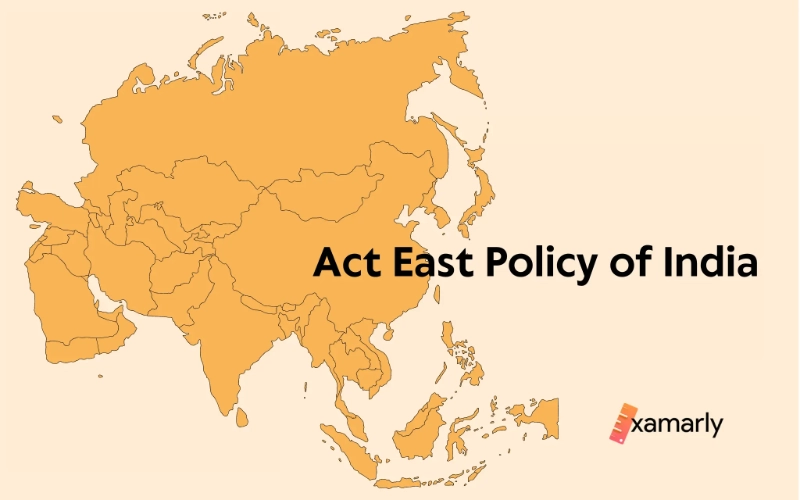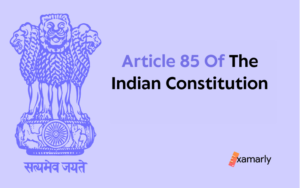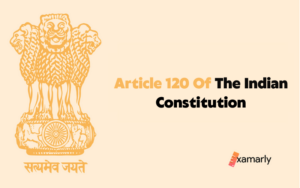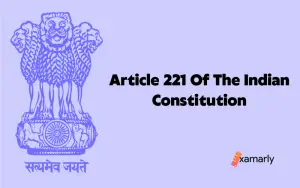In 2014, in order to foster relationships with countries and strength extensive geopolitical and economic ties between the countries of the South-East Asian region, the “Act East Policy” replaced the “Look East Policy”. It is essentially a diplomatic effort to strengthen cultural, strategic, and economic ties through continuous engagements with the Asian Pacific region on various levels.
This Act East Policy entails intensive and ongoing engagement between the South-East Asia region on regional, bilateral, and multilateral levels in the areas of connectivity, trade, culture, defense, and people-to-people contact.
The policy has aided in promoting collaboration on a number of projects, including the Kaladan Multimodal Project and the Trilateral Highway project.
Those who are attempting the UPSC exam will find this information on relations between neighboring countries to be of immense help.
- What does India's Act East policy stand for?
- The Primary Aim of Act East policy
- Benefits of Act East Policy to India
- Significance of Act east policy in the Asia-Pacific Region
- Act East Policy (2014) vs Look East Policy (1991)
- Factors challenging the success of Act East Policy in North East India
- Association of South East Nations (ASEAN) Regional Forum – Introduction
- Act East Policy of India – How it strengthens partnerships between India and ASEAN.
- Investments In India
- ASEAN
- Japan
- South Korea
- Quad – (Quadrilateral Security Dialogue)
- Regional Comprehensive Economic Partnership Program (RCEP)
- Initiatives to Enhance Connectivity
- Way Forward: India-ASEAN Summit
- Conclusion
- FAQs Related To Act East Policy
- What is the main objective of the Act East Policy?
- Name the prominent infrastructure development projects that are initiated under the Act East Policy.
- Which countries does the Act East Policy focus on?
- How does the Act East Policy enhance regional cooperation?
- What is the significance of the Act East Policy for India's foreign policy?
What does India’s Act East policy stand for?
The Act East Policy was introduced by the Indian government, under the leadership of Prime Minister Narendra Modi, in November 2014 at the East Asia Summit in Myanmar.
India’s Act East policy is a diplomatic initiative that aims to advance various levels of cultural, geopolitical, and economic integration within the vast Asia-Pacific region.
It is seen as the modern version of Prime Minister V. Narasimha Rao’s ‘Look East Policy,’ which was unveiled in 1991.
The Act East Policy is built on four pillars of 4C’s:
- Culture
- Commerce
- Connectivity
- Capacity building
The Primary Aim of Act East policy
The “Act East policy” is India’s response to China’s rising power and expanding influence in the Asia-Pacific region. The objective is to enhance India’s relationship with all countries in the region while fostering global economic cooperation and security integration.
By enhancing connectivity between North-East states, particularly Arunachal Pradesh, and neighboring nations, the “Act East Policy” aims to promote economic development, cultural relations, and strategic relationships with nations in the Asia-Pacific region.
India’s Act East policy centers around four key elements. It aims to secure the Indian Ocean from increasing security competition by improving naval capabilities, infrastructure, capacity development, and institutional leadership. It looks to find alternatives to traditional business partners; more emphasis should be given to South-East Asia and Pacific Rim nations.
Benefits of Act East Policy to India
- One of the most important benefits of the Act East policy for India is its strategic location. It lies between South Asia and the Middle East and borders Southeast Asia and China.
- Due to these advantages, India can act as a focal point for trade, transportation, and communication, and project its cultural power in the region.
- Even though India has always worked to strengthen its economic and security relations, it has allowed competing nations to take center stage.
Significance of Act east policy in the Asia-Pacific Region
The strategic partnership between India and Japan has been elevated to a whole new level as a result of this policy, thereby highlighting the importance of Indo-Pacific cooperation.
This policy is at the core of Prime Minister Narendra Modi’s slogan for the region. It also calls for accelerated integration with South East Asia and preserving the balance of power in the region. Ultimately, the policy will have far-reaching positive consequences for India and its neighbors.
The new policy will focus on bilateral and multilateral engagement and economic cooperation. The Indian government is committed to achieving its strategic goals through the Act East policy. This new policy also aims to enhance India’s position in the world economy by increasing its competitiveness in regional trade.
At the regional level, ASEAN’s significance is an enduring modern feature of the Indo-Pacific.
The ‘Indo-Pacific’ has become the focal point of India’s involvement with other countries in the South, Southeastern region, and Eastern regions of Asia. Act ‘East’ is gradually being changed into Act ‘Indo-Pacific.’
The character of Indo-ASEAN ties has been significantly impacted by the rise of China since the end of the Cold War. But through cooperation in economic and security matters, they should continue to improve.
The Act East policy aims to achieve long-term development goals for India’s North-Eastern region while also providing an extra channel for the country’s economic growth to fight China’s expanding hostility in South Asia.
Act East Policy (2014) vs Look East Policy (1991)
Listed in the table below, are a few prominent differences between India’s ‘Act East’ and ‘Look East’ policies.
| Act East Policy | Look East Policy | |
| When was the policy launched? | The Act East policy got introduced at the 12th ASEAN-India Summit, which took place in Myanmar in 2014. | The Look East Policy was initiated in 1991 when India had a fragile economy |
| Who launched it? | Narendra Modi, India’s present PM, launched this policy. | PV Narasimha Rao, India’s Former PM, launched this policy. |
| What was India’s situation when it was launched? | India’s economic standing was quite advantageous at the time the Act East Policy was introduced in 2014. | India’s economy was extremely fragile when the Look East policy was introduced because of the 1991 financial crisis. India was undergoing a liberalization of its economy. |
| Why the policy was initiated? | It was initiated to address changes in geopolitical scenarios due to China’s dominance over the South China Sea and its growing control in the Indian Ocean Territory. | The Indian economy relied heavily on the Soviet Union. Unfortunately, the falling of the Soviet block has turned India into an alternative region. India recognized that the region has immeasurable growth potential as China and Japan have already grown to be significant economic forces in the area. |
| Focus of the particular policy | 1. The construction of infrastructure for better connectivity in the Asian region, as well as the efficient coordination of strategic and security relations, are the main areas of focus. The second aim is to focus on changing the geo-political scenario. 2. The Act East Policy has a broader strategic and political perspective on regional cooperation. Relations with Malaysia, Japan, Vietnam, South Korea, and Australia have been expanded into strategic partnerships to counter China’s dominance across the entire region. 3. It focuses more on linguistic, historical, religious, and cultural bonds through more people-to-people contacts. 4. The development of the North-Eastern Indian States is given utmost importance. India is of the belief that its northeastern region can act as an entrance into Southeast and East Asia. Through international agreements, Japanese investments are assisting India by financing numerous infrastructure projects. 5. Maximum focus on defense cooperation 6. Together, India and Japan are constructing infrastructure in Bangladesh, Myanmar, and Sri Lanka. | 1. Economic performance is their main focus. 2. Priority was placed on strengthening ties with nations in the Southeast Asian region in terms of trade and investment. There was no ongoing interaction among the Quad nations of India, the United States, Japan, and Australia, nor was there any upgrading of the strategic ties with other nearby countries. 3. The Look East policy did not take up this factor. 4. India’s aspirations to forge closer relations with East Asia overlooked the expansion of its northeastern region. 5. Defense cooperation was not focused. 6. Development cooperation projects for other countries were not under India’s focal points. |
The common points between the 2014 Act East Policy and 1991 Look East Policy of 1991 are given below:
- Shared Economic Interests
- Common Strategic Interests.
Factors challenging the success of Act East Policy in North East India
There are two key factors that are becoming hurdles in the triumph of Act East Policy.
- The increasing Chinese influence with growing tensions between India and China. The region has seen a growth in the number of ethnic Chinese people and China’s direct influence. The world seemed impressed by the way China handled the COVID-19 Pandemic and the aid that it provided to the region. The conflict in Galwan Valley demonstrates the intense tension between China and India.
- Disappointment with India’s economic policy in the region. There aren’t many significant business agreements between India and East Asian nations.
Association of South East Nations (ASEAN) Regional Forum – Introduction
In 1967, the Organization of Southeast Asian Nations (ASEAN) was founded. It is a federation of ten countries that are physically located in the South Eastern region of Asia and India is its fourth-largest trading companion. ASEAN’s five founding members are:
- Philippines
- Indonesia
- Thailand
- Malaysia
- Singapore
In 1996, India was admitted to the ASEAN Regional Forum (ARF). Since 2002, India and ASEAN have had yearly summits to promote cooperation in the areas listed below:
- Social-Cultural ties
- Economic ties
- Strengthen Security ties
- Political ties
Act East Policy of India – How it strengthens partnerships between India and ASEAN.
Institutional Mechanisms, Trade & Regional Forums
The institutional structures listed below are used to strengthen partnerships between India and the ASEAN.
| 1. | Annual Summit Level Meetings |
| 2. | India engages as an active participant in the East Asia Summit. |
| 3. | 30 Sectoral Dialogue Mechanisms |
| 4. | India has joined the ARF (ASEAN Regional Forum) as an active member |
| 5. | Other regional forums that India has participated in include the Bay of Bengal Initiative for Multi-Sectoral Technical and Economic Cooperation (BIMSTEC), the Mekong Ganga Cooperation, the Asia Cooperation Dialogue, and the Indian Ocean Rim Association (IORA). |
Infrastructure, Trade & Commerce Ties
| 1. | ASEAN is India’s fourth-largest trading partner. |
| 2. | The extent of trade between the two countries exceeded $ 80 billion in the fiscal year 2017-18. In the same fiscal year, India’s imports from ASEAN totaled more than $ 45 billion, while exports to ASEAN totaled around $ 34 billion. |
| 3. | AIFTA (ASEAN – India Free Trade Area), a free trade zone between India and ten ASEAN member states, began in 2010. |
| 4. | ASEAN India Grand Challenge to support ASEAN startups to provide financially feasible solutions for India’s major issues. |
| 5. | In August 2015, the ASEAN-India Plan of Action (2016–2020) was approved. The three pillars of political security, socio-cultural, and economic pillars are identified, along with specific actions and opportunities for cooperation. |
| 6. | Recently, India began construction on a seaport in Sabang, Indonesia. This aims to strengthen India-Indonesia strategic collaboration. Sabang is near India’s Andaman and the Nicobar Islands. |
Investments In India
ASEAN
ASEAN countries have invested in India in the sectors listed below:
- Highways
- Ports
- Food Processing
- Auto Components/ Automobile Parts
- Shipping
Since 2000, India has received $77 billion in FDI (Foreign Direct Investment) from ASEAN. There will be an increase in this throughout the ensuing years.
Japan
- The 2+2 Ministerial Dialogue has been formalized by India and Japan.
- The emphasis is on increasing Japanese investments in India (with reference to sectors such as skill development, transportation, smart cities, and so on) two-fold.
- Japanese investments have poured into important industries like telecommunications, automotive, chemical, and pharmaceuticals.
- India has made the decision to build electronic parks and Japanese industrial townships.
South Korea
- South Korean FDI exceeded $5.5 billion by the end of 2018.
- Hyundai, Samsung, and LG all add a major South Korean presence in the Indian vehicle industry, as well as in the electronics market.
Quad – (Quadrilateral Security Dialogue)
India, the USA, Japan, and Australia engage in an informal strategic conversation known as the “Quad.”
- It was founded in 2007, but due to Australia’s withdrawal, it did not gain much momentum.
- After a meeting between four heads of state during the ASEAN Summit in 2017, Quad was reconstituted in 2017.
The cause for its rebirth was the rise of apprehensions in the South China Sea as a result of China’s territorial ambitions in the region. - The Indian, the US, and the Japanese Navy are all participating in the Malabar Exercise, a key military exercise. India is in charge of this military drill.
Regional Comprehensive Economic Partnership Program (RCEP)
- The proposed FTA will involve the 10 ASEAN member countries and its 5 FTA partners (South Korea, Australia, New Zealand, Japan, and China).
- India moved out of the RCEP in November 2019 despite being an ASEAN FTA partner.
- According to India, the RCEP will have a negative effect on its inhabitants.
Initiatives to Enhance Connectivity
So many initiatives have been taken to enhance the connectivity between different nations and these are:
- The Trilateral Highway Project and the Kaladan Multimodal Transit Transport Project link North East India with Thailand and Myanmar.
- Bangladesh-India Rail Link (Agartala-Akhaura).
- Inland waterways and intermodal transport linkages through Bangladesh.
- In order to facilitate collaboration between India and Japan in line with Japan’s “Free and Open Indo-Pacific Strategy” and India’s “Act East Policy,” the India-Japan Act East Forum was formed in 2017.
- The Forum will figure out the specific initiatives for economically modernizing India’s North-East area, such as those involving connectivity, infrastructure development, industrial linkages, and inter-human interactions through travel, culture, and sports activities.
- Road and bridge construction projects as well as the modernization of hydroelectric power projects have been carried out under the India-Japan Act East Forum.
Other Initiatives
Some more initiatives that are undertaken under act east policy are:
- Participants from ASEAN countries have been granted scholarships at IITs with promises of a thousand Ph.D. fellowships.
- During the pandemic, ASEAN nations received assistance in the form of medicines and medical supplies.
- In order to help communities at the grassroots level with development in the areas of education, water resources, health, etc., India is also undertaking Quick Impact Projects in Myanmar, Laos, Vietnam, and Cambodia.
- Quick Impact Projects (QIPs) are low-cost, small-scale projects that are quickly planned and carried out.
Way Forward: India-ASEAN Summit
- Regional value chains must be developed in order to expand India-ASEAN economic cooperation.
- India is the world’s second-largest and largest in the production of food grains and milk, respectively. The agriculture business and the food production sector can both benefit from regional value chains.
- Increase collaboration in the fields of design, engineering, and R&D, forums on energy cooperation, and security cooperation.
- Encourage Small and Medium Enterprise (SME) cooperation through joint ventures, business partnerships, and technology transfers.
- Need to give ample importance to environmental services, information technology services, transportation, and banking in order to accelerate the growth of India-ASEAN economic ties.
- Japan is funding infrastructure improvement initiatives in northeastern India. According to Narendra Modi, India’s present prime minister, the North East is seen as the entry point to nations in Southeast Asia and East Asia.
- Increase the emphasis on air connectivity, land connectivity, and maritime security because this region handles a good part of the world’s trade.
- Hindu and Buddhist relationships can help foster new cultural contacts and connections among the people.
This article revolving around India’s act east policy will be beneficial to the UPSC aspirants in their civil service examination preparation. Also, you may opt for Examarly, an ed-tech platform to speed up your IAS preparation.
Examarly provides you with personalized study schedules, an overview of what to read for current affairs, quizzes, curated study resources, and much under one platform that will help you to prepare for IAS with ease.
Conclusion
The Act East policy promotes regional collaboration with ASEAN Nations, which offers India a viable counterweight to China which is currently assertive and pursuing regional dominance in Asian countries.
India’s earlier policy focused on industrial development, regional development, and economic agreements and not on bilateral relations, connectivity between people in border areas like cultural connectivity, historical connectivity, infrastructure connectivity, digital connectivity projects, people relations, and two-way trade which Act East Policy implemented and gave immense scope to improve economic relations to all.
FAQs Related To Act East Policy
What is the main objective of the Act East Policy?
The main objective of the Act East Policy is to enhance economic and strategic ties between India and countries in the Asia-Pacific region, with a focus on Southeast Asia. This includes promoting trade, investment, tourism, and cultural exchange, as well as strengthening security and defense cooperation.
Name the prominent infrastructure development projects that are initiated under the Act East Policy.
Some of the prominent Infrastructure projects are Rhi-Tiddim Road Project, Border Haats Kaladan Multi-modal Transit Transport Project, and India-Myanmar-Thailand Trilateral Highway Project.
Which countries does the Act East Policy focus on?
The Act East Policy focuses primarily on countries in Southeast Asia, including Indonesia, Thailand, Vietnam, Malaysia, Singapore, the Philippines, and Myanmar. It also includes countries in East Asia, such as Japan, South Korea, and China.
How does the Act East Policy enhance regional cooperation?
The Act East Policy promotes regional cooperation by encouraging regional integration and cooperation in areas such as environmental protection, disaster management, and maritime security. The policy also aims to enhance security and defense cooperation with countries in the Asia-Pacific region, with a focus on Southeast Asia. This includes joint training and exercises, as well as intelligence sharing and collaboration on security issues.
What is the significance of the Act East Policy for India’s foreign policy?
The Act East Policy is significant for India’s foreign policy as it helps to enhance India’s ties with countries in the Asia-Pacific region by which India is able to enhance its influence in the region and become a major player in shaping regional policies and initiatives.






